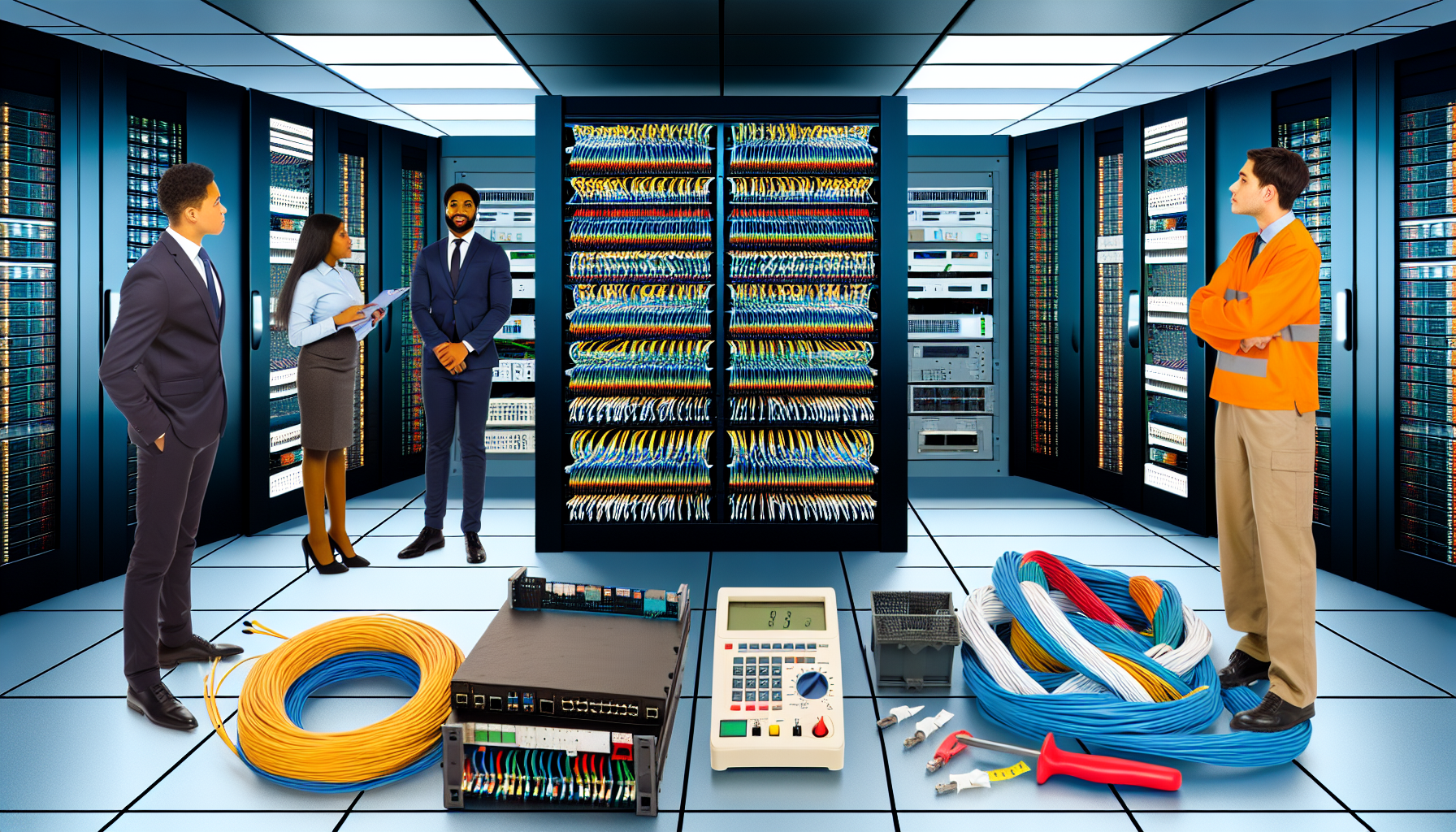Structured cabling systems are the backbone of modern communication infrastructures. They provide a standardized approach to wiring, allowing for flexibility, scalability, and ease of troubleshooting and maintenance. Whether for an office building, data center, or any commercial establishment, understanding best practices in installation is crucial for optimal performance. This article outlines essential guidelines for installing structured cabling systems.
What is Structured Cabling?
Structured cabling is a system of standardized cabling and equipment that allows for a wide range of services, including data networking, voice communication, and video transmission. By adhering to specific cabling standards, structured cabling ensures that your network can be easily adapted for future needs.
Key Components of Structured Cabling Systems
- Horizontal Cabling: Connects telecommunications rooms to individual work areas.
- Vertical Cabling (Backbone): Connects different floors and telecommunications rooms.
- Telecommunications Rooms: Points where cables are terminated and connected to systems.
- Work Area Outlets (WAOs): Interfaces where end-user devices connect to the network.
- Patch Panels: Serve as a connection point for cables coming from various sources.
Best Practices for Installation
1. Planning and Design
Before installation begins, effective planning is critical. This involves:
- Network Assessment: Understand the current and future networking needs.
- Blueprints: Create detailed floor plans indicating cable routes and locations of telecommunications rooms.
- Compliance with Standards: Familiarize yourself with ANSI/TIA and ISO/IEC standards which guide cable types, lengths, and configurations.
2. Choosing the Right Cables
Select cables based on performance requirements and environmental factors. Popular choices include:
- Category 5e/6/6A: Suitable for most office environments, supports gigabit data transmission.
- Fiber Optic: Ideal for high-speed connections over longer distances, especially in data centers.
3. Cable Management
Proper cable management is key to maintaining an organized and efficient cabling system. Consider:
- Using Cable Trays: Install cable trays to organize horizontal runs and prevent damage.
- Color-Coding: Use color-coded cables or ties to differentiate between types of services (data, voice, video).
- Labeling: Clearly label both ends of cables and patch panels for easy identification.
4. Installation Techniques
During installation, follow excellent practices to ensure optimal performance:
a. Avoiding Interference
- Keep power cables and devices separate from data cables (minimum of 12 inches apart) to minimize electromagnetic interference (EMI).
- Use shielded cables (STP) in areas with high EMI.
b. Proper Termination
- Ensure that all cables are neatly terminated at both ends. Follow manufacturer guidelines for connectors and tools.
- Use the appropriate punch-down tool for terminating cables on patch panels or keystone jacks.
c. Maintaining Cable Integrity
- Do not bend cables at sharp angles; maintain a minimum bend radius as specified by the manufacturer.
- Avoid pinching cables under doors or in tight spaces to prevent damage.
5. Testing and Validation
Run tests after installation to ensure your structured cabling system meets performance standards:
- Use a Cable Tester: Verify continuity, wire mapping, and signal strength.
- Certification: Consider having the system certified by a third-party professional to ensure compliance with industry standards.
6. Documentation
Maintain comprehensive documentation of the cabling system. This should include:
- Cable routes and types.
- Patch panel configurations.
- Test results and certifications.
- A change management log to document any alterations in the cabling system.
7. Regular Maintenance
Once the system is in place, regular maintenance is essential:
- Conduct periodic inspections to identify wear, damage, or potential issues.
- Update documentation as changes occur.
Conclusion
Proper installation of a structured cabling system can significantly enhance the efficiency and reliability of your network. It is not just about wiring; it’s about creating a system that will adapt over time. By following these best practices for planning, choosing materials, and maintaining the system, you can ensure optimal performance tailored for future growth.
FAQs
1. What is the difference between horizontal and vertical cabling?
Horizontal cabling connects individual work areas or outlets to telecommunications rooms, typically running horizontally across floors; vertical cabling (or backbone) connects different telecommunications rooms, running vertically between floors.
2. What types of cables are recommended for structured cabling?
Category 5e, 6, and 6A cables are commonly used for data transmission in office environments. Fiber optic cables are recommended for high-speed, long-distance connections.
3. How often should I perform maintenance on my cabling system?
Regular inspections are recommended at least once a year, but you should assess it more frequently if experiencing technical issues or if the network environment changes.
4. What is the best way to reduce electromagnetic interference (EMI)?
Maintain a minimum of 12 inches of separation between power and data cables, and consider using shielded twisted pair (STP) cables in high EMI environments.
5. Is it necessary to certify my cabling system?
Certification is not strictly necessary but is highly recommended. It ensures that your installed system meets industry performance standards and provides peace of mind regarding the reliability of your network.
By adhering to these best practices, you’ll create a structured cabling system that is robust, efficient, and prepared for the future.


